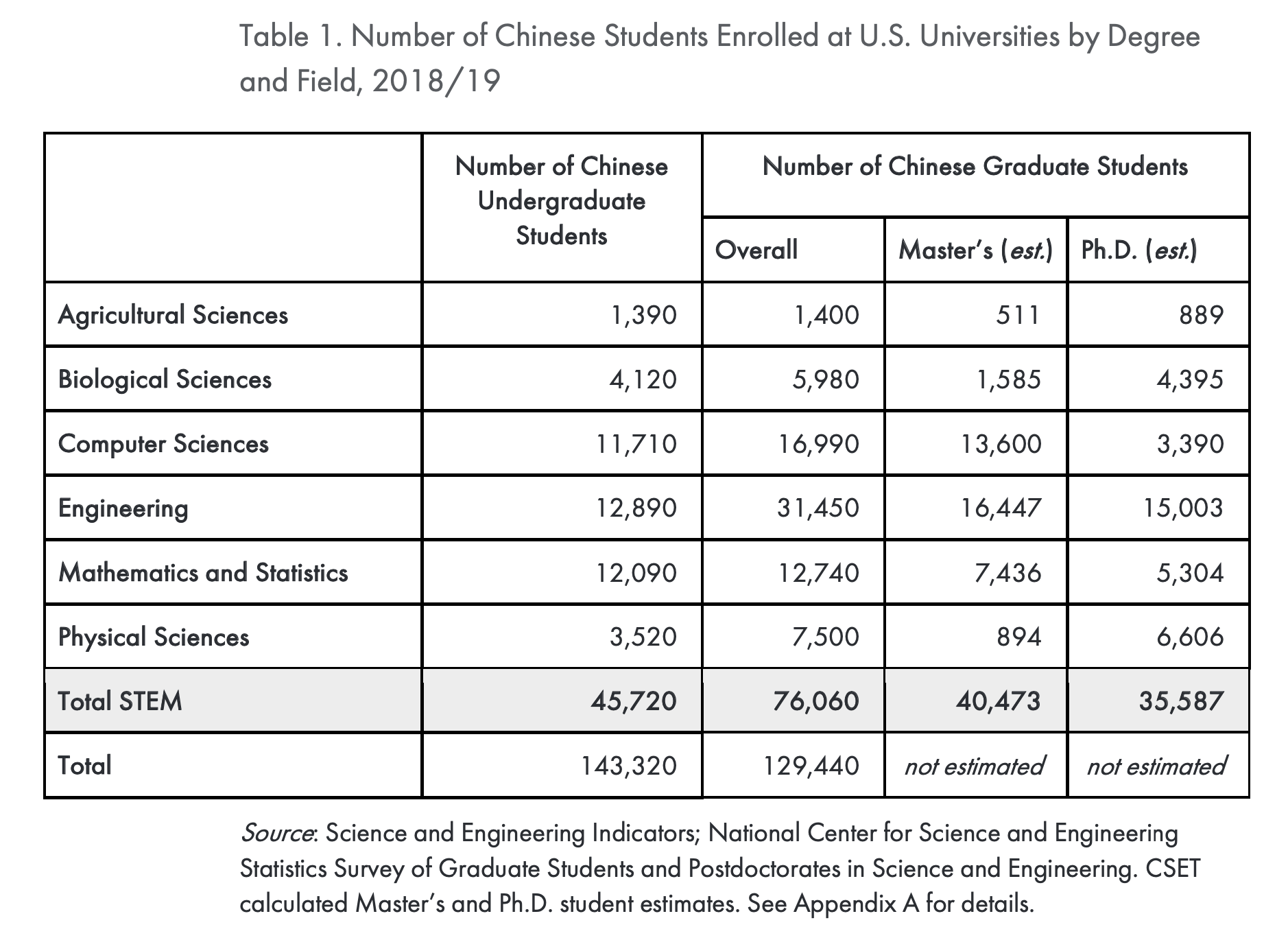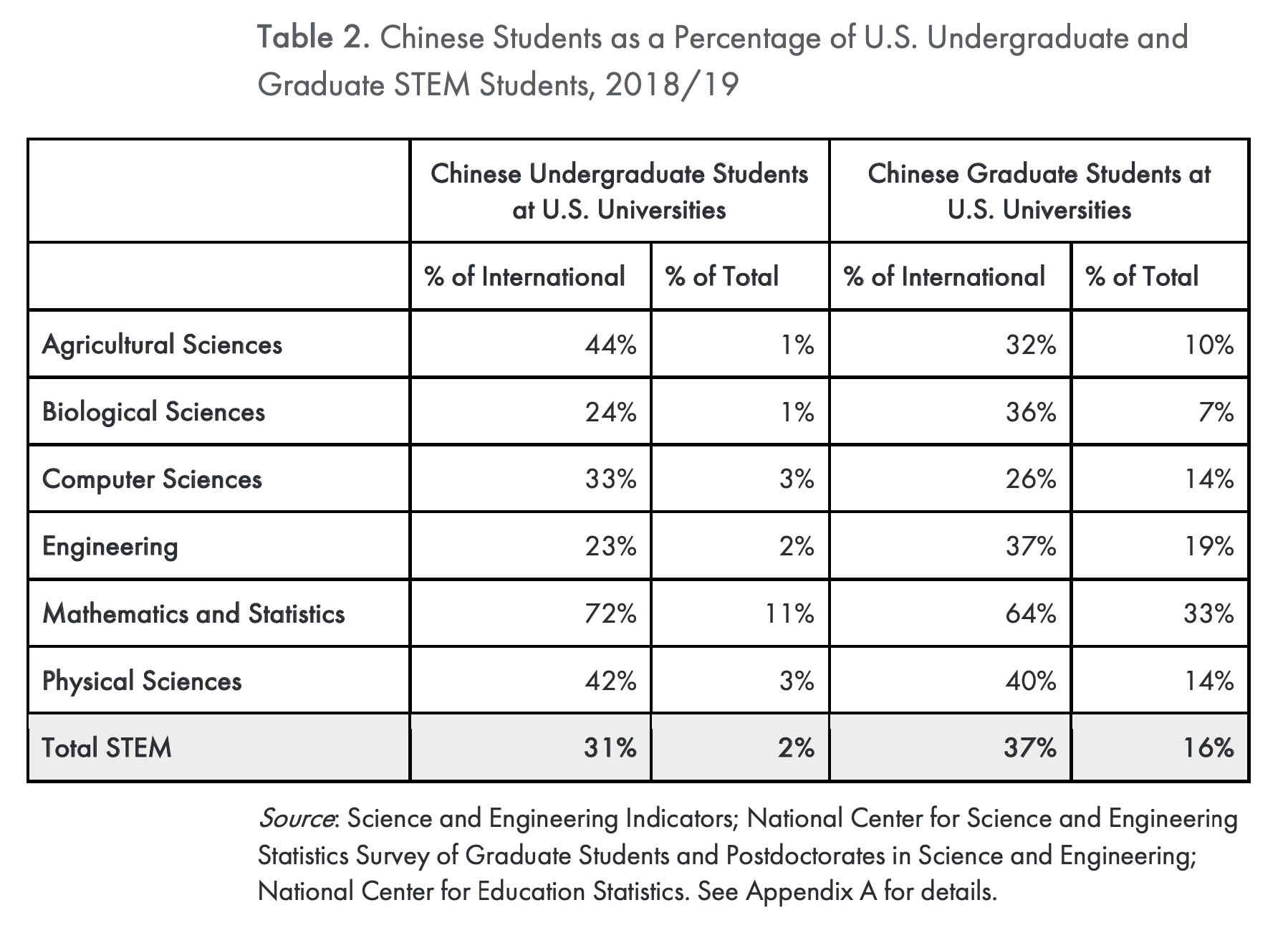Executive Summary
This paper assesses how many Chinese students are enrolled in U.S. universities across field, degree level, and time. We combine and analyze data from the National Science Board’s Science and Engineering Indicators (SEI), the National Center for Science and Engineering Statistics (NCSES), the National Center for Education Statistics (NCES), and the Institute of International Education (IIE).
The results speak to ongoing policy conversations about the risks and benefits of Chinese students enrolled in science, technology, engineering, and mathematics (STEM) programs at U.S. universities. These conversations have been hampered by a lack of granular data on the number of enrolled Chinese students by field and degree level. For example, it is currently impossible to calculate the financial impact of Chinese students on the U.S. university system because we do not know how many Chinese graduate students are in master’s programs (and thus likely to pay full tuition) versus Ph.D. programs (for which they often receive university or federal funding). This paper seeks to provide such data and to identify remaining data gaps that should be filled.
Because there is no single database of domestic and international students in the United States that includes all the relevant information, analysts have had to produce estimates using several different data sources. These sources often count slightly different things over possibly different periods, complicating the analysis and increasing the risk of inadvertent errors. Our findings differ from widely-cited government estimates. Whereas those estimates suggested that 25 percent of U.S. STEM graduate students and 15 percent of STEM undergraduates are Chinese, we conclude with high confidence that the numbers are 16 percent and 2 percent, respectively.
The key findings are presented in Tables 1 and 2, whose sources and methods are detailed in the Appendix. Table 1 shows the number of enrolled Chinese undergraduate and graduate students by field in academic year 2018/19, focusing on the six main STEM fields at U.S. universities. Across those STEM fields, there are around 46,000 Chinese undergraduates, an estimated 40,000 master’s students, and an estimated 36,000 Ph.D. students. At the undergraduate level, around one-third of all Chinese students at U.S. universities are in STEM fields, compared to more than half at the graduate level.

Table 2 puts the numbers presented in Table 1 into context by calculating the percentage of international and total STEM students at U.S. universities who are Chinese. At the undergraduate level, we find that Chinese students comprise 31 percent of international students and 2 percent of all students at U.S. universities in STEM fields. At the graduate level, we find that Chinese students comprise 37 percent of international students and 16 percent of all U.S. students in STEM fields.

The remainder of this paper discusses why these numbers matter and how they were estimated; provides historical trend data; and identifies remaining data gaps on Chinese students and researchers in the United States that agencies and researchers should fill.
